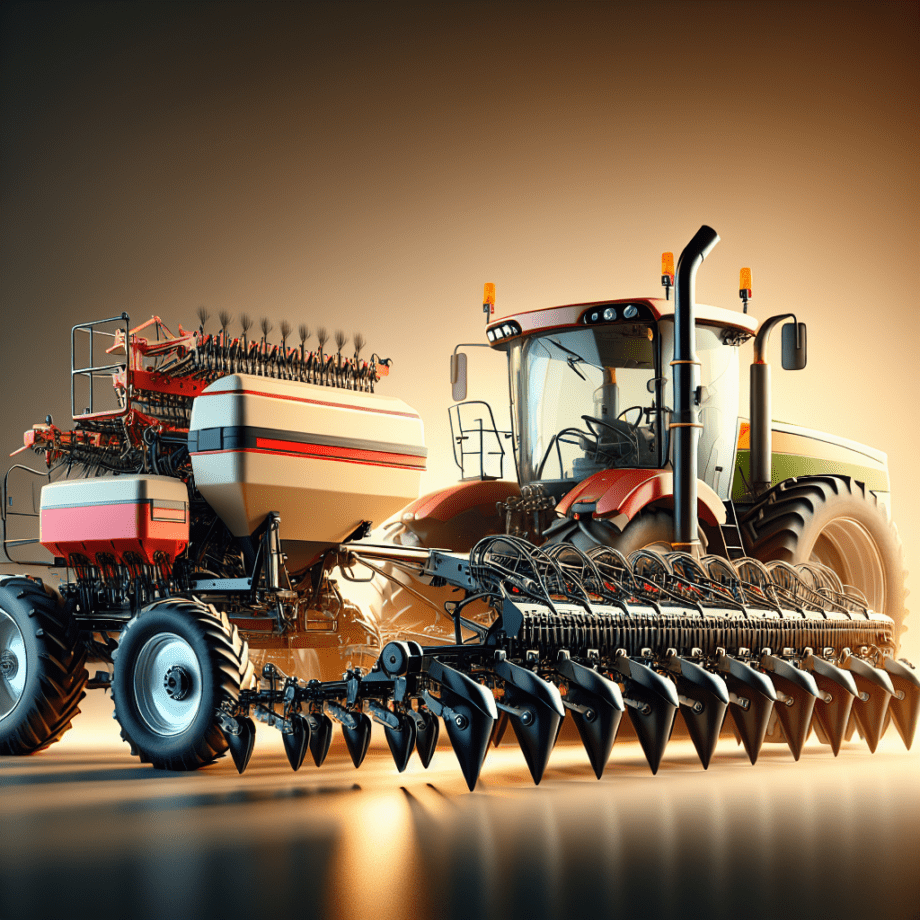Understanding the differences between planters and seeders is crucial for optimizing agricultural productivity. Both types of machinery play a vital role in planting crops, but they are designed for different purposes and offer unique advantages. This article delves into the key differences between planters and seeders, as well as their specific applications in modern agriculture.
Design and Functionality
The primary distinction between planters and seeders lies in their design and functionality. Planters are specialized machines designed to place seeds at precise intervals and depths. They are typically used for row crops such as corn, soybeans, and cotton. The precision of planters ensures that each seed is planted at the optimal depth and spacing, which is crucial for maximizing yield and ensuring uniform crop growth.
Seeders, on the other hand, are more versatile and can be used for a variety of crops, including grains, grasses, and legumes. They are designed to broadcast seeds over a wide area or to drill them into the soil at a consistent depth. Seeders are generally less precise than planters but are ideal for crops that do not require exact spacing, such as wheat, barley, and oats.
Planters
Planters are equipped with mechanisms that ensure precise seed placement. These mechanisms include seed metering systems, which control the rate at which seeds are released, and seed tubes, which guide the seeds into the soil. Planters also have depth control systems that ensure seeds are planted at the correct depth, which is essential for proper germination and growth.
One of the key advantages of planters is their ability to plant seeds in rows with exact spacing. This precision allows for better weed control, as there is less space for weeds to grow between the rows. Additionally, the uniform spacing ensures that each plant has adequate access to sunlight, water, and nutrients, which can lead to higher yields.
Seeders
Seeders come in various types, including broadcast seeders, drop seeders, and drill seeders. Broadcast seeders scatter seeds over a wide area, making them ideal for planting cover crops or grasses. Drop seeders release seeds in a controlled manner, ensuring even distribution across the planting area. Drill seeders, also known as grain drills, place seeds in rows at a consistent depth, similar to planters but with less precision.
One of the main benefits of seeders is their versatility. They can be used for a wide range of crops and are particularly useful for planting small-seeded crops that do not require precise spacing. Seeders are also generally easier to operate and maintain than planters, making them a popular choice for small-scale farmers and those with diverse cropping systems.
Applications in Modern Agriculture
The choice between planters and seeders depends largely on the type of crop being planted and the specific requirements of the farming operation. Understanding the unique advantages and limitations of each type of machinery can help farmers make informed decisions and optimize their planting processes.
Row Crops
For row crops such as corn, soybeans, and cotton, planters are the preferred choice due to their precision and ability to plant seeds at exact intervals. The uniform spacing provided by planters allows for better weed control and ensures that each plant has adequate access to resources. This can lead to higher yields and more efficient use of inputs such as water and fertilizer.
In addition to their precision, planters are also equipped with advanced technology that can further enhance their performance. For example, some modern planters are equipped with GPS and variable rate technology, which allows for precise control of seed placement and planting depth. This technology can help farmers optimize their planting processes and improve overall efficiency.
Grains and Forages
For grains and forages such as wheat, barley, oats, and grasses, seeders are often the preferred choice. The versatility of seeders makes them ideal for planting a wide range of crops, and their ability to broadcast or drill seeds ensures even distribution across the planting area. This is particularly important for crops that do not require precise spacing, as it allows for more efficient use of the planting area.
Seeders are also well-suited for planting cover crops, which are used to improve soil health and reduce erosion. Cover crops are typically planted in the off-season and do not require precise spacing, making seeders an ideal choice for this application. Additionally, the ease of operation and maintenance of seeders makes them a popular choice for small-scale farmers and those with diverse cropping systems.
Conclusion
In summary, both planters and seeders play a crucial role in modern agriculture, but they are designed for different purposes and offer unique advantages. Planters are ideal for row crops that require precise spacing and depth control, while seeders are more versatile and can be used for a wide range of crops. Understanding the key differences between these types of machinery can help farmers make informed decisions and optimize their planting processes, ultimately leading to higher yields and more efficient use of resources.
As technology continues to advance, both planters and seeders are becoming more sophisticated and capable of delivering even greater precision and efficiency. By staying informed about the latest developments in agricultural machinery, farmers can continue to improve their planting processes and achieve better outcomes for their crops.
